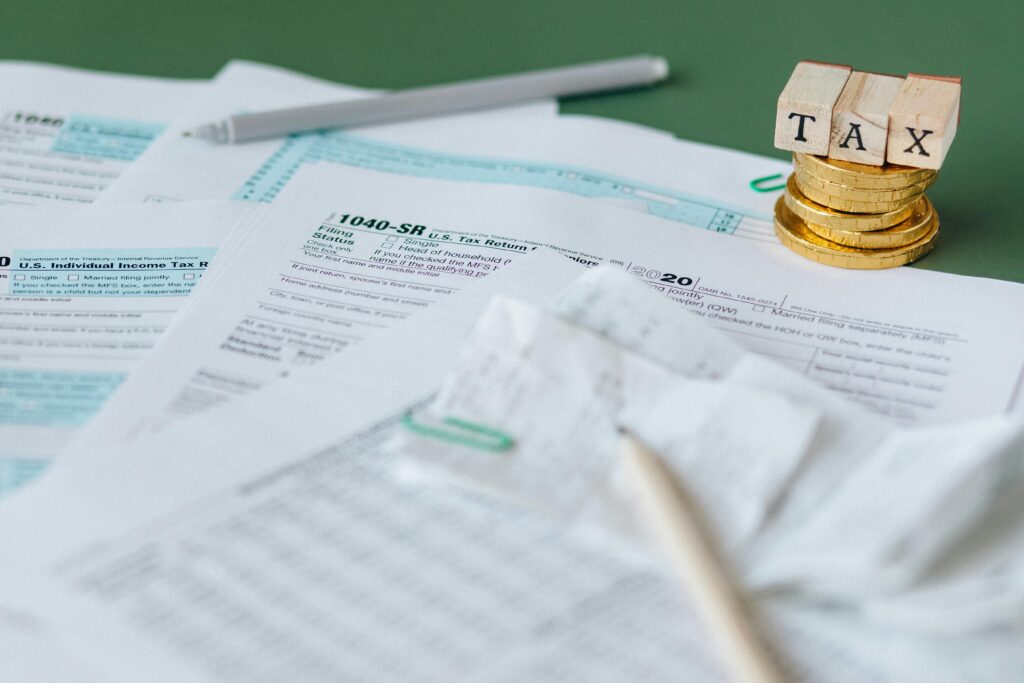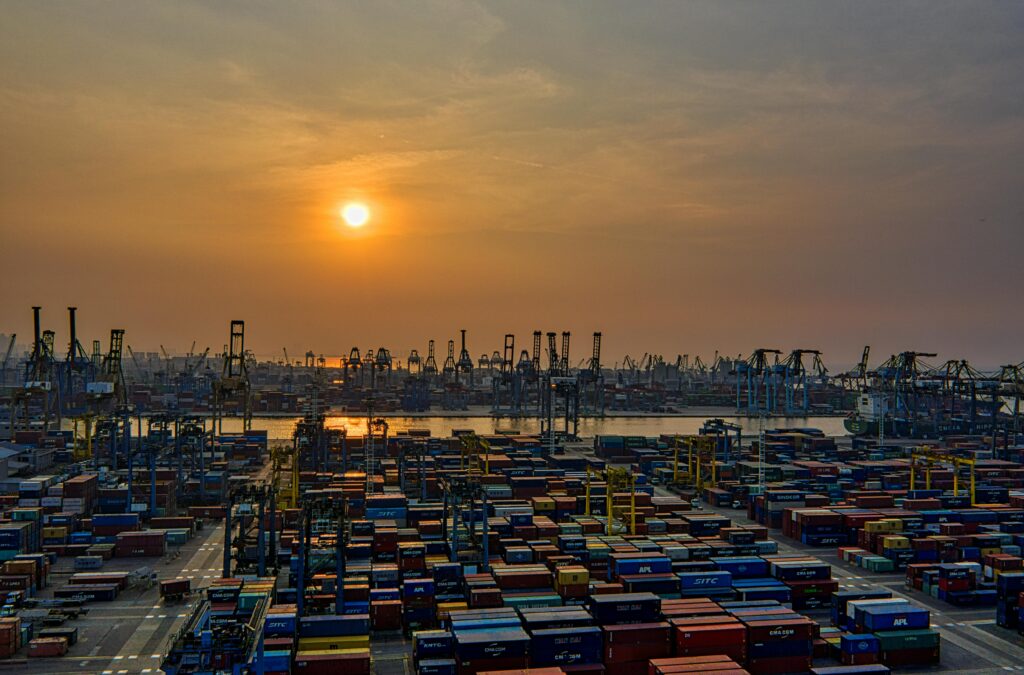Taxes in India: A Complete Guide
Taxes are an integral part of a country’s economy. They are the foundation of a country’s growth and development. Taxes help in funding public infrastructure, health care, education, and welfare schemes. With one of the largest populations in the world, India relies heavily on taxes to fund its welfare schemes and ambitious projects. Taxes link to individuals’ income, spending habits, and investments. Taxes link to profit, operations, and transactions for Businesses.
Understanding taxes is not only important for legal compliance but also for financial planning. This blog explores the types of taxes in India, their importance, and the current framework you should know about.

What are taxes?
A tax is a compulsory charge imposed by the government on businesses, individuals, and organizations. The government uses them for the proper functioning of the state and country.
Types of Taxes in India
India divides taxes into broader categories:
- Direct Tax: The government imposes these taxes directly on individuals and organizations based on their income and profits. Examples include: income tax, securities transaction tax (STT),
- Indirect Tax: The government levies these taxes on goods and services. Customers pay them. Examples include: customs duty, goods and services tax (GST).
Income Tax

It is a direct tax levied by the government on the income earned by individuals, Hindu Undivided Families (HUFs), firms, companies, and other entities. You need to pay this tax if your total income exceeds the basic exemption limit in the current financial year. Income Tax classifies income into five categories, which are:
- Income from salary
- Earnings from house property
- Earnings from business/profession
- Income from capital gains, like selling property, stocks, gold, etc. This includes STCG – Short Term Capital Gain and LTCG – Long Term Capital Gain.
- Income from other sources, like lottery winnings, savings interest, gifts, dividends, etc.
In India, taxpayers get two income tax regimes to choose from: the New Tax Regime and the Old Tax Regime. The income slabs for both regimes are as below:
Income Slab: New Tax Regime
| Income Range | Tax Rate |
|---|---|
| Up to ₹3,00,000 | Nil |
| ₹3,00,001 – ₹6,00,000 | 5% |
| ₹6,00,001 – ₹9,00,000 | 10% |
| ₹9,00,001 – ₹12,00,000 | 15% |
| ₹12,00,001 – ₹15,00,000 | 20% |
| Above ₹15,00,000 | 30% |
Income Slab: Old Tax Regime
| Income Range (Individuals <60 yrs) | Tax Rate |
|---|---|
| Up to ₹2,50,000 | Nil |
| ₹2,50,001 – ₹5,00,000 | 5% |
| ₹5,00,001 – ₹10,00,000 | 20% |
| Above ₹10,00,000 | 30% |
Key differences between the two regimes
| Feature | Old Regime | New Regime (Default) |
|---|---|---|
| Slab Rates | Higher | Lower |
| Deductions/Exemptions | Allowed (80C, 80D, HRA, Home Loan, etc.) | Mostly not allowed |
| Standard Deduction | Yes (₹50,000 for salaried) | Yes (₹50,000 for salaried) |
| Rebate u/s 87A | Up to ₹5 lakh income → Nil tax | Up to ₹7 lakh income → Nil tax |
| Best For | Taxpayers with many investments/loans | Taxpayers without many deductions |
Few additional charges increase your tax liability in India. These are:
Health and Education Cess (Mandatory)
The government levies a 4% tax on the total income tax payable.
Surcharge (For high-income individuals and companies)
A surcharge is an extra charge on the income tax for people earning above a certain level.
For Individuals (FY 2025-26, New Regime):
- 10% of income tax if income > ₹50 lakh and ≤ ₹1 crore.
- 15% of income tax if income > ₹1 crore and ≤ ₹2 crore.
- 25% of income tax if income > ₹2 crore and ≤ ₹5 crore.
- 37% of income tax if income > ₹5 crore.
Under the new tax regime, the government caps the maximum surcharge at 25%.
For Companies:
- 7% surcharge if taxable income > ₹1 crore.
- 12% surcharge if taxable income > ₹10 crore.
Interest & Penalties (If You Delay or Default)
- Interest u/s 234A – for late filing of return.
- Interest u/s 234B – for not paying advance tax.
- Fee u/s 234F – for filing ITR after due date (₹5,000 to ₹10,000).
- Interest u/s 234C – for deferment of advance tax.
Capital Gains Tax

Whenever you sell a property, gold, or shares, the profit you earn on it is called capital gain. It is taxable under the Income Tax Act, 1961. Capital gains tax is a tax levied on the profit from the sale of a capital asset. Capital Assets include:
- Real estate (land, building, house property)
- Stocks, bonds, debentures, mutual funds.
- Gold, jewellery, or any other valuable items.
If you receive assets as a gift, inheritance, or will, there is no tax at the time of transfer. The government levies tax only when you sell them.
Types of Capital Gains
The holding period of the asset determines the categorization of capital gains.
Short Term Capital Gain (STCG)
- Sold within a short period of holding.
- Holding period criteria:
- Listed shares/equity mutual funds: ≤ 12 months
- Real estate (land/building): ≤ 24 months
- Gold, debt funds, bonds, others: ≤ 36 months
- Tax rate:
- Listed shares & equity MFs → 15% (u/s 111A)
- Other assets → Taxed at normal income tax slab rate
Long Term Capital Gain (LTCG)
- Sold after a longer holding period.
- Holding period criteria:
- Listed shares/equity mutual funds: > 12 months
- Real estate (land/building): > 24 months
- Gold, debt funds, bonds, others: > 36 months
- Tax rate:
- Listed shares/equity MFs → 10% (above ₹1 lakh, without indexation)
- Other assets (property, gold, debt funds) → 20% with indexation
| Asset Type | Short-Term Holding Period | STCG Tax Rate | Long-Term Holding Period | LTCG Tax Rate | Old vs New Regime Difference |
|---|---|---|---|---|---|
| Listed Equity Shares & Equity Mutual Funds | ≤ 12 months | 15% flat (u/s 111A) | > 12 months | 10% (on gains above ₹1 lakh, no indexation) | Same in both regimes |
| Unlisted Shares | ≤ 24 months | Normal slab rate (5%, 20%, 30%) | > 24 months | 20% with indexation | Same in both regimes |
| Real Estate (Land/Building) | ≤ 24 months | Normal slab rate | > 24 months | 20% with indexation | Same in both regimes |
| Gold, Debt Mutual Funds, Bonds, Jewellery | ≤ 36 months | Normal slab rate | > 36 months | 20% with indexation | Same in both regimes |
| Business/Other Assets | Varies | Normal slab rate | Varies | Normal slab rate / 20% (depending on classification) | Same in both regimes |
Securities Transaction Tax (STT)

They levy it on the purchase and sale of securities listed on the stock exchange. The Government of India introduced it in 2004. It is a direct tax charged at the time of buying or selling securities through recognized exchanges. The stock exchange collects the tax and pays it to the government.
The system instantly deducts STT on each eligible transaction.
STT applies to the following securities traded on recognized stock exchanges in India:
- Equity shares (delivery-based and intraday)
- Equity derivatives (futures & options)
- Equity-oriented mutual funds (purchase/sale on exchange)
- Exchange-traded funds (ETFs)
- Units of business trusts
It does not apply to commodities, currency trading, bonds, or debentures.
| Type of Transaction | STT Rate | Levied On | Who Pays |
|---|---|---|---|
| Delivery-based Equity (Purchase) | 0.1% | Value of purchase | Buyer |
| Delivery-based Equity (Sale) | 0.1% | Value of sale | Seller |
| Intraday Equity (Sale only) | 0.025% | Value of sale | Seller |
| Equity Futures (Sale only) | 0.0125% | Value of sale | Seller |
| Equity Options (Sale of Option) | 0.0625% on Premium | Premium amount | Seller |
| Equity Options (Exercise of Option) | 0.125% | Settlement price | Buyer |
| Sale of units of Equity-oriented MF/ETF (through exchange) | 0.001% | Value of sale | Seller |
| Sale of units of Business Trust (REITs/InvITs) through exchange | 0.001% | Value of sale | Seller |
Securities Transaction Tax (STT) may seem small per trade, but it can significantly add up for frequent traders. While it ensures compliance and enables concessional capital gains tax treatment, investors should always factor in STT when calculating net profitability.
For long-term investors, STT is a minimal cost for transparent investing. But for day traders and derivatives traders, it can be a crucial factor affecting overall returns.
Professional tax

Professional Tax is a state-level tax, not a central one. That means its rules, rates, and applicability differ from state to state. It is a direct tax levied by some state governments in India. It applies to salaried employees, professionals (doctors, lawyers, and chartered accountants), freelancers, self-employed individuals, traders, and business owners.
The State Government collects it through the Commercial Tax Department. States like Maharashtra, Karnataka, West Bengal, Gujarat, Andhra Pradesh, Telangana, Tamil Nadu, Madhya Pradesh, Odisha, etc., apply this tax, while Delhi, Haryana, Rajasthan, Uttar Pradesh do not levy Professional Tax. Not all states apply this tax.
Professionals like doctors, lawyers, freelancers, and traders must register with the State’s Professional Tax Department. They need to pay PT directly, usually quarterly or annually.
Road Tax

Road Tax is a state-level tax levied by the State Government under the Motor Vehicles Act, 1988. The government charges it on motor vehicles for using public roads. The amount depends on vehicle type, engine capacity, fuel type, age of the vehicle, purpose (commercial/personal), and vehicle cost. Road tax rates differ across states.
When is the road tax paid?
- Onetime: Paid at the time of vehicle registration, usually valid for 10–15 years.
- Annually/quarterly: Some states allow or require periodic payments, especially for commercial vehicles.
- Transfer of vehicles between states: If you move your vehicle permanently to another state, you must pay road tax again in the new state (after getting NOC from the previous RTO).
For two-wheelers, the tax is between 4%-10%. The tax for private four-wheelers is 8%-15% of the cost. Commercial vehicles are taxed based on seating capacity, weight, and usage. Many states offer full exemptions or reduced taxes to promote the adoption of electric vehicles.
Road tax in some of the major states in India:
| State | Two-Wheeler Road Tax | Four-Wheeler Road Tax | Notes |
|---|---|---|---|
| Karnataka | 4% – 10% of cost | 13% – 18% of cost | Among the highest in India |
| Maharashtra | 11%–13% of the cost | 13% – 18% of the cost | Higher for expensive cars |
| Delhi | 4% – 8% | 4% – 15% | EVs exempted |
| Tamil Nadu | 8% – 10% | 10% – 15% | Based on price brackets |
| Telangana | 9% – 12% | 12% – 14% | Lifetime tax applicable |
| West Bengal | 6% – 10% | 10% – 12% | Varies by engine capacity |
| Uttar Pradesh | 6% – 8% | 8% – 9% | Comparatively lower |
| Kerala | 6% – 10% | 10% – 15% | 10% of the cost |
Municipal Tax

If you own a house, shop, or any other property in India, you’re probably familiar with the term Municipal Tax. This is a local tax levied by the municipal corporation or local urban body of your area. It’s one of the key sources of revenue for local authorities, helping them provide civic amenities such as water, sewage, street lighting, garbage disposal, and road maintenance. This tax is mandatory for all property owners and is usually collected annually or half-yearly.
Municipal Tax (also called Property Tax) is a direct tax imposed by the local civic body on real estate (land and buildings). It is based on the property’s value and is payable by the owner, not the tenant. Collected revenue is used to maintain and improve local infrastructure.
The value of municipal tax is decided based on:
- Location of property.
- Type of property.
- Size of property.
- Usage.
- Age of property.
- Building material (kutcha/pucca).
Municipal tax in some of the major states in India:
| City / State | Method Used | Key Factors Considered | Example Tax Rate / Structure |
|---|---|---|---|
| Delhi (NDMC, MCD, DCB) | Unit Area Value (UAV) | Location category (A to H), property type, usage, age, occupancy | Residential: ₹0.8–₹1.5 per sq. m × unit area × multiplier. Commercial: Higher multiplier (up to 3×). |
| Mumbai (MCGM/BMC) | Capital Value System (CVS) | Market value of property, carpet area, property type, age | Residential tax: 0.316% of market value; Commercial: 1.44%. Minimum charges apply. |
| Bengaluru (BBMP) | Unit Area Value (UAV) | Location (zones A–F), built-up area, usage, age, occupancy | Formula: Built-up area × Unit area rate × 10 months × Depreciation factor. |
| Hyderabad (GHMC) | Annual Rental Value (ARV) | Expected rental value of the property, usage type, and location | Residential: 17–30% of ARV. Commercial: 19–33% of ARV. |
| Chennai (Greater Chennai Corporation) | Half-Yearly Assessment | Built-up area, usage, basic rate (per sq. ft.), location | Residential: Around 0.6–1% of annual value; payable half-yearly. |
| Kolkata (KMC) | Unit Area Assessment | Location-based value (per sq. ft.), property type, usage | Market value of property, carpet area, property type, and age |
| Pune (PMC) | Capital Value Method | Market value, location, property type, usage | Residential rate: ~6–20% of annual value; Commercial rate is higher. |
It is generally a bundle of charges like property tax, water tax, sewerage or drainage tax, lightning tax, and in some cases, education or health cess.
Stamp Duty

When you buy a property, whether it is land, a house, or a flat, the transaction is legally valid only if you pay stamp duty. It is a state government tax collected on property transactions, and the stamped document serves as legal proof of ownership. Stamp duty is one of the biggest costs (apart from the property price itself) in real estate transactions, and rates differ across states. It is charged on the transaction value or circle rate (government-fixed minimum value) – whichever is higher. Stamp duty is collected under the Indian Stamp Act, 1899. But each state notifies its own rate. The proof of payment is affixed on the property documents as a stamp.
Why is stamp duty important?
- A property without stamp duty is not admissible in the court.
- It ensures that the buyer’s name is legally registered.
- It is a major source of income for state governments.
Stamp duty is an unavoidable cost that adds 5-8% to the total property value, making it a key factor in budgeting for real estate investments.
BOCW Cess
Building and Other Construction Workers Welfare Cess

The construction sector in India employs millions of workers, many of whom work under harsh and unsafe conditions. To safeguard their rights and welfare, the Government of India enacted the Building and Other Construction Workers (Regulation of Employment and Conditions of Service) Act, 1996, commonly known as the BOCW Act. Along with it, the Building and Other Construction Workers’ Welfare Cess Act, 1996, was introduced to create welfare funds through a cess on construction projects.
BOCW ACT
- It regulates employment, working conditions, safety, health, and welfare of construction workers.
- It applies to all establishments employing 10 or more workers in building/construction work.
- The Act covers workers engaged in constructing houses, buildings, dams, highways, bridges, dams, canals, irrigation projects, power plants, railways, etc.
The BOCW Welfare Cess Act of 1996 introduced BOW Cess. It is a tax/cess collected on the cost of construction of a project. It rates at 1% of the construction cost. It is payable by the employer/contractor/owner of the project.
Utilization of BOCW Funds
- Medical aid and health schemes.
- Accident coverage and compensation.
- Pension benefits.
- Education support for workers’ children.
- Housing loans or subsidies.
- Skill development and training.
- Maternity benefits for women workers.
This cess also exempts residential housing costing up to 10 lakh. This tax also exempts projects that comply with the factories and mines laws.
VAT and Excise Duty

Before the implementation of GST (Goods and Services Tax) in July 2017, the taxation on goods was governed by Value Added Tax (VAT) and Excise duty. While GST has subsumed most of these taxes, VAT and Excise Duty are still relevant in certain cases today.
Value Added Tax (VAT)
Value Added Tax (VAT) is a state-level indirect tax imposed on the sale of goods within a state. The government charges VAT at each stage of the value chain, meaning it levies VAT whenever someone adds value to a product. Key features of VAT :
- State governments levy it.
- It applies to the sale of goods and not services.
- The tax rate varies across states and product categories.
After GST, VAT was subsumed into it, but it is still applicable on certain products like Petrol, Aviation Fuel, and Diesel.
Excise Duty
Excise Duty is a central government tax imposed on the manufacture or production of goods in India. Unlike VAT (levied on sale), Excise Duty was charged at the manufacturing stage. Key features include:
- Central Government levies it.
- It applies to the production or manufacture of goods.
- There are three types: basic, additional, and special.
GST replaced excise duty, but it is still applicable on petrol, diesel, tobacco, and tobacco products.
Goods and Services Tax (GST)

The Goods and Services Tax (GST) is one of the biggest tax reforms in India. Introduced on 1st July 2017, GST replaced multiple indirect taxes like VAT, Excise Duty, and Service Tax with a single unified tax system. It follows the principle of “One Nation, One Tax”, making taxation simpler, more transparent, and uniform across the country.
- GST is a comprehensive indirect tax levied on the supply of goods and services.
- It is a destination-based tax – collected at the point of consumption, not origin.
- It subsumes central taxes (Excise Duty, Service Tax) and state taxes (VAT, Entry Tax, Luxury Tax).
Types of GST
Depending on the type of transaction, GST is divided into:
- CGST (Central GST): Collected by the Central Government on intra-state sales.
- SGST (State GST): Collected by the State Government on intra-state sales.
- IGST (Integrated GST): Collected by the Central Government on inter-state sales (between two states).
- UTGST (Union Territory GST): Collected on transactions in Union Territories.
Example: If you buy goods worth ₹1,000 in Delhi, GST = CGST + SGST. If goods move from Delhi to Maharashtra, GST = IGST.
GST Registration
- GST Registration is mandatory for business owners having a turnover greater than 40 lakh.
- For small business owners, the registration is not mandatory.
- After registration, the taxpayer gets a GSTIN – Goods and Services Tax Identification Number.
Benefits of GST
- It replaces multiple indirect taxes.
- It is transparent since it is single across multiple states.
- Businesses can claim credit for tax paid on inputs – Input Credit Tax (ITC).
- Reduce cascading effect – no tax on tax.
- Digitally compliant since the entire process is online.
Challenges of GST
- Frequent changes in rules and rates.
- Frequent issues with the technical portal.
- There is a high compliance burden.
- There is an additional burden on small businesses as they need to incur the additional cost of tax consultants and software.
GST vs the Previous Tax System
| Feature | Pre-GST Era | GST Era |
|---|---|---|
| Taxes | VAT, Excise Duty, Service Tax, Octroi, Entry Tax | Single tax (GST) |
| Authority | Central + State separate taxes | Unified system (CGST, SGST, IGST) |
| Cascading Effect | Tax on tax existed | Eliminated with ITC |
| Transparency | Complicated, state-specific rules | Uniform and transparent |
| Compliance | Offline + multiple filings | Online, streamlined filing |
GST Slabs
| GST Rate | Covered Items (Examples) |
|---|---|
| 0% (Exempt) | Essential stationery (notebooks, pencils, maps), life & health insurance premiums, select daily staples like UHT milk and paneer, and life-saving drugs. |
| 5% | Packaged foods, toiletries (soap, shampoo), butter, ghee, cheese, utensils, small household items, agricultural tools, medicines, and feeding diapers. |
| 18% | All standard goods and services—e.g., restaurants, telecom, financial services, electronics like TVs, ACs, motorcycles (≤ 350cc), small cars (< 1200cc), and auto parts. |
| 40% (Demerit / Luxury) | Luxury items and sin goods—cigarettes, pan masala, aerated/sugary drinks, motorbikes > 350cc, yachts, private aircraft, betting & casinos. |
Customs Duty

It is a type of indirect tax levied on goods imported into or exported from India. Its primary purpose is:
- To regulate international trade.
- To protect domestic industries from foreign competition.
- To generate revenue for the government.
The Customs Act of 1962 governs customs duty, and the Central Board of Indirect Taxes and Customs (CBIC) administers it.
Types of Customs Duty
| Type | Description |
|---|---|
| Basic Customs Duty (BCD) | The Customs Tariff Act of 1975 prescribes rates for levying it on imported goods. |
| Countervailing Duty (CVD) | It is imposed on imports to counterbalance the excise duty charged on similar domestic goods. |
| Anti-Dumping Duty | It is levied when goods are imported at prices below their normal value (dumping). |
| Safeguard Duty | A temporary duty is imposed when a sudden surge in imports that threatens the domestic industry. |
| Protective Duty | It is imposed to protect certain domestic industries (rates decided by the Tariff Commission). |
| IGST on Imports | Imported goods are also subject to Integrated GST (IGST) at applicable rates. This ensures parity with GST levied on goods manufactured in India. |
| Social Welfare Surcharge (SWS) | It is an additional surcharge (currently 10% of BCD) levied to fund social welfare schemes. |
The total customs duty payable =
Assessable Value (CIF: Cost + Insurance + Freight) + Basic Customs Duty + Cess + IGST + Other Surcharges
Exemptions
- Certain goods like life-saving drugs, defense imports, and charitable items are exempt.
- Export-oriented units (EOUs), SEZs, and government projects often get duty concessions.
- Free Trade Agreements (FTAs) allow reduced or zero customs duty on imports from partner countries.
Importance
- Revenue Generation – a significant source of government income.
- Trade Regulation – controls the flow of goods across borders.
- Industry Protection – shields domestic industries from foreign competition.
- Consumer Safety – ensures banned/harmful goods don’t enter the country.
Toll Tax

It is a fee collected from vehicles using certain roads, highways, expressways, tunnels, or bridges. The money collected is used for:
- Building, maintaining, and repairing roads.
- Recovering construction costs of national highways and expressways.
- Providing better infrastructure and safety facilities for commuters.
In India, the National Highways Authority of India (NHAI manages toll collection) under the National Highways Act, 1956. It is collected either in cash, via FASTag (mandatory for all vehicles since 2021), or through prepaid digital wallets. The charges depend on the type of vehicle, distance covered, and road project cost. The toll tax is determined by:
- Length of the road/highway.
- Construction & maintenance costs.
- Type of vehicle (car, bus, truck, multi-axle).
- Lane category (single-lane, double-lane, expressway).
FASTag
It is an electronic toll collection system based on RFID technology. A sticker affixed to the vehicle windshield. The system automatically deducts toll charges from the linked wallet/bank account. This reduces waiting time, there are no cash payments, and it provides transparency in toll collection.
Exemptions
- Vehicles of the President, Vice President, Prime Minister, Chief Justice of India, judges, MPs, MLAs (on duty).
- Ambulances, fire trucks, and defense vehicles.
- Vehicles of the Ministry of Defence & armed forces.
- Vehicles carrying funeral processions.
Taxes are the backbone of India’s economic framework, ensuring the government has the resources to build infrastructure, provide public services, and drive national development. From direct taxes like income tax and capital gains tax to indirect taxes such as GST, customs duty, tolls, and municipal levies, each type of tax plays a unique role in nation-building.
While taxation may feel like a burden at times, it is also a civic duty that contributes to the country’s growth and welfare. Understanding different taxes not only helps individuals and businesses stay compliant but also allows them to plan finances wisely, take advantage of exemptions, and avoid penalties. In short, paying taxes isn’t just about fulfilling a legal obligation—it’s about contributing to the nation’s progress.
